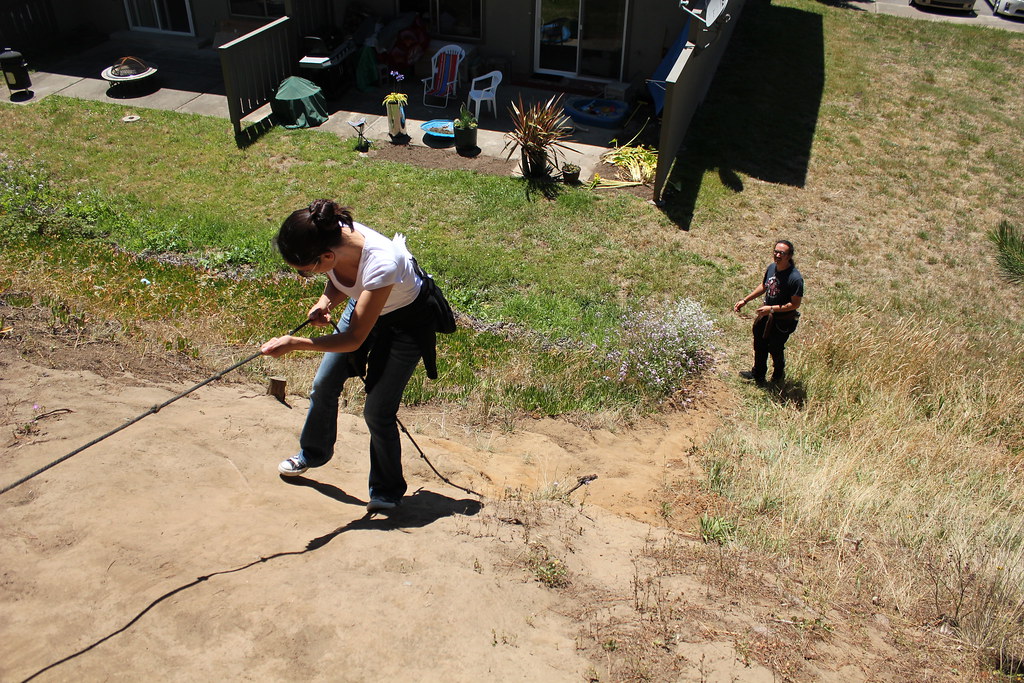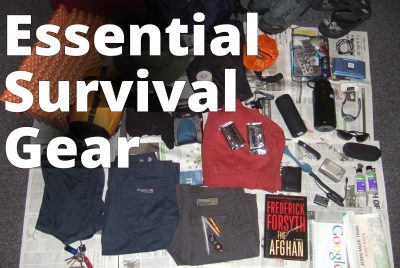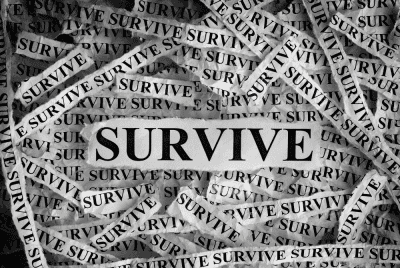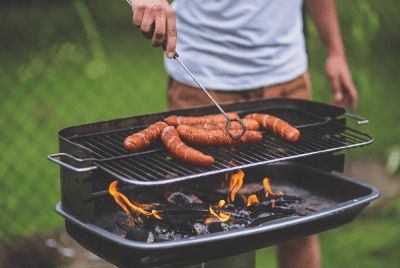25 Must-Have Tools for Self-Reliance
Empower Your Independence: Essential Tools for Self-Reliance and Sustainability
In an era where convenience often trumps capability, the art of self-reliance can appear to be a relic of the past.
Yet, it’s precisely this modern dependency on external sources for our basic needs that underscores a growing movement towards sustainability and self-sufficiency.
To be self-reliant is not to eschew modern conveniences but to empower oneself with the knowledge and tools necessary to reduce dependency on these systems.
Among the myriad ways to achieve this autonomy, having the right tools is paramount.
Herein lies a curated list of the best 25 must-have tools for self-reliance, each selected not only for its utility but for its capacity to reconnect us with the tactile joy of creating, growing, and sustaining with our own hands.
Learn about the Best 25 Must-Have Tools for Self-Reliance
By reading this article, you will learn:
– The essential tools for self-reliance including axe, hatchet, saw, knife, multi-tool, shovel, rake, pitchfork, scythe, and more.
– How to equip yourself with the necessary tools for gardening, food preservation, and off-grid cooking.
– The importance of these tools for self-sufficiency and survival preparedness.
1. Axe
An axe is more than just a tool; it’s a bridge to our ancestral past, a reminder of the times when building and sustaining were done by hand.
Whether you’re splitting firewood for warmth or clearing land for cultivation, a well-crafted axe can be your steadfast partner.
In my own journey towards self-reliance, the rhythmic swing and satisfying split of wood became a meditative practice, grounding me to the earth and its resources.

2. Hatchet
The hatchet, the axe’s smaller sibling, is indispensable for its versatility. Perfect for more intricate tasks like kindling, its portability makes it an essential tool for any outdoor adventure.
My hatchet has been a constant companion on camping trips, proving its worth in countless situations, from fire building to makeshift repairs.
3. Saw
A reliable saw is indispensable for efficient woodcutting, whether you’re managing a forest for firewood or crafting your own furniture.
The evolution of saws from manual to powered versions offers a range of choices for the modern homesteader.
Yet, there’s something profoundly satisfying about the manual labor involved in using a traditional crosscut saw, a sentiment echoed by many in the self-reliance community.
4. Knife
A good knife is arguably the most versatile tool in any self-reliant toolkit. From preparing food to crafting tools, its uses are limitless.
Personal experience has taught me the importance of investing in a high-quality knife and maintaining its edge; a practice not just of utility, but of respect for the tool and its craft.
5. Multi-tool
The multi-tool embodies the ethos of self-reliance: compact, versatile, and ready for anything. It’s the Swiss Army knife of the modern age, with applications in repair, construction, and everyday tasks.
Owning a multi-tool is like having a toolbox in your pocket, always prepared for the unexpected.

6. Shovel
The humble shovel is a cornerstone of self-reliance, pivotal for gardening, building, and even survival. Its design has remained largely unchanged over centuries, a testament to its fundamental utility.
My own shovel has dug garden beds, trenches for irrigation, and even helped erect a greenhouse, its handle worn smooth by years of use.
7. Rake
A rake might seem unassuming, but its value in cultivating soil and managing garden debris is unparalleled.
Beyond its practical applications, the rhythmic motion of raking has a calming, almost therapeutic quality, offering a deeper connection to the land and the cycle of growth and renewal.
8. Pitchfork
The pitchfork, with its iconic silhouette, is vital for composting, one of the pillars of sustainable living.
Turning compost with a pitchfork not only aerates the pile, promoting decomposition, but also serves as a physical reminder of the cycle of life and death, decay and rebirth.
9. Scythe
The scythe, though less common today, is a powerful tool for managing large areas of vegetation. Its use requires skill and endurance, connecting the user to the land in a deeply physical way.
My own experiments with a scythe have imbued me with a respect for the laborers of the past, and a profound appreciation for the efficiency of modern tools.

10. Garden Hoe
The garden hoe is indispensable for weed management and soil preparation. Its simplicity belies its effectiveness, making it a favorite among gardeners for centuries.
My hoe has shaped countless garden beds, its blade dulled from use but no less effective, a testament to the enduring value of well-made, simple tools.
11. Garden Fork
A garden fork is essential for turning soil and harvesting root vegetables. Its tines penetrate the earth with ease, making light work of tasks that would be backbreaking with a shovel.
My own garden fork has unearthed potatoes, turned compost, and even served as an impromptu weapon against garden pests.
12. Pruning Shears
Pruning shears are vital for maintaining the health and productivity of your garden. Precise and easy to use, they make quick work of trimming plants and trees.
Personal experience has taught me the importance of regular maintenance, a lesson that extends beyond the garden to life itself.
13. Loppers
For thicker branches that pruning shears cannot handle, loppers are the tool of choice. Their long handles provide the leverage needed for tough cuts, making them indispensable for tree maintenance.
My loppers have shaped the landscape of my property, each cut a deliberate act of shaping the natural world.
14. Wheelbarrow
A wheelbarrow is more than just a means of transport; it’s a symbol of the labor and effort that self-reliance requires.
Whether hauling soil, compost, or harvests, a sturdy wheelbarrow can save countless trips and aching backs. My wheelbarrow has been a faithful servant in countless projects, its well-worn handles a testament to its indispensability.

15. Garden Cart
For larger loads or more delicate cargo, a garden cart is an invaluable tool. Its stability and capacity make it ideal for transporting everything from plants to tools across uneven terrain.
My garden cart has been a mobile workstation, a portable nursery, and an essential part of my gardening routine.
16. Broadfork
The broadfork is a revelation for those practicing no-till agriculture. By aerating the soil without disturbing its structure, it promotes healthy root growth and microorganism activity.
Using a broadfork has transformed my garden beds, their productivity a direct result of this simple yet effective tool.
17. Cultivator
A cultivator is indispensable for aerating soil and uprooting weeds. Whether manual or powered, its functionality streamlines garden maintenance, making it a favorite among those dedicated to self-reliance.
My own cultivator has saved me countless hours of labor, its tines turning the soil with ease.
18. Soil Blocker
For those starting plants from seed, a soil blocker is a game-changer. By eliminating the need for plastic pots, it’s not only more sustainable but also promotes healthier root growth.
My transition to using soil blockers has reduced waste and increased the vigor of my seedlings, a small change with significant impacts.
19. Seed Spreader
A seed spreader ensures even distribution of seeds, whether for a lush lawn or a wildflower meadow. Its precision saves time and resources, making it an essential tool for large-scale planting projects.
My own experiences with a seed spreader have taught me the value of patience and precision in all things.
20. Watering Can
A watering can is a simple yet essential tool for precise irrigation, especially in delicate seedling stages. Its gentle flow mimics natural rainfall, promoting healthy plant growth.
My watering can has become an extension of my arm during the growing season, its presence as constant as the plants it nurtures.

21. Rain Barrel
Collecting rainwater is a cornerstone of sustainable living, and a rain barrel makes it accessible.
By repurposing rainwater for irrigation, we reduce our reliance on treated water sources, closing the loop on a natural cycle.
My rain barrel has not only saved on water bills but has also deepened my connection to the rhythms of nature.
22. Compost Bin
A compost bin is essential for converting waste into wealth, transforming kitchen scraps and garden debris into nutrient-rich soil.
Its presence in the garden is a constant reminder of the cycle of life, a tangible connection to the processes that sustain us.
My compost bin has taught me the value of what many consider waste, turning it into a resource that nourishes the very source of our sustenance.
23. Solar Oven
The solar oven epitomizes self-reliance, harnessing the sun’s energy to cook food without fuel. Its use is both a practical solution to energy needs and a statement on sustainable living.
My experiments with a solar oven have been a journey of discovery, each meal a lesson in the power of natural forces.
24. Pressure Canner
Preserving food through canning is a time-honored tradition of self-reliance. A pressure canner allows for the safe preservation of a wide variety of foods, extending the bounty of the harvest throughout the year.
My own canning adventures have filled my pantry with jars of preserved fruits, vegetables, and meats, a tangible representation of self-sufficiency.

25. Food Dehydrator
A food dehydrator is a versatile tool for preserving food, creating snacks, and even crafting. By removing moisture, it extends the shelf life of foods while concentrating their flavors.
My dehydrator has produced everything from dried fruits for hiking trips to herbs for cooking, each batch a step towards greater self-reliance.
In conclusion, these 25 tools are not merely instruments of labor but symbols of independence and sustainability.
Each tool, from the simplicity of a hoe to the complexity of a solar oven, represents a step towards a more self-reliant lifestyle.
As we integrate these tools into our lives, we not only equip ourselves with the means to sustain our bodies but also nurture our connection to the earth and its cycles.
The path to self-reliance is both a personal journey and a collective endeavor, and with these tools in hand, we are well-equipped to walk it.
Real-Life Self-Reliance: Embracing Off-Grid Living
Growing up in a rural area, my family relied on self-sufficiency for our everyday needs.
We had a small farm where we grew our own food and raised animals. One winter, a heavy snowstorm knocked out power for several days, leaving us isolated.
It was during this time that I truly understood the importance of having the right tools for self-reliance.
Claire’s Experience with Essential Tools
I vividly remember using our axe and saw to cut firewood to keep warm, the shovel to clear paths, and the garden cart to transport supplies.
Our solar oven and pressure canner allowed us to cook and preserve food without electricity. These experiences cemented the value of being prepared and having the necessary tools for self-reliance.
This upbringing instilled in me the importance of being prepared for any situation and having the right tools for self-reliance.
These tools are not just items on a list; they are essential for anyone embracing off-grid living or simply seeking to be more self-sufficient.
Common Questions
Who needs the best 25 must-have tools for self-reliance?
Anyone seeking to be self-sufficient and independent will benefit from these tools.
What makes these tools essential for self-reliance?
These tools are carefully selected to help individuals meet their basic needs independently.
How can I acquire the best 25 must-have tools for self-reliance?
You can find these tools at specialty stores, online retailers, or through self-reliance workshops.
What if I can’t afford to buy all 25 tools at once?
Start with the most essential tools and gradually build your self-reliance toolkit over time.
Why are these specific 25 tools considered the best for self-reliance?
These tools have been chosen based on their versatility, durability, and practicality for self-sufficiency.
How can I learn to effectively use these self-reliance tools?
Many resources, such as instructional videos and workshops, can teach you how to utilize these tools effectively.



